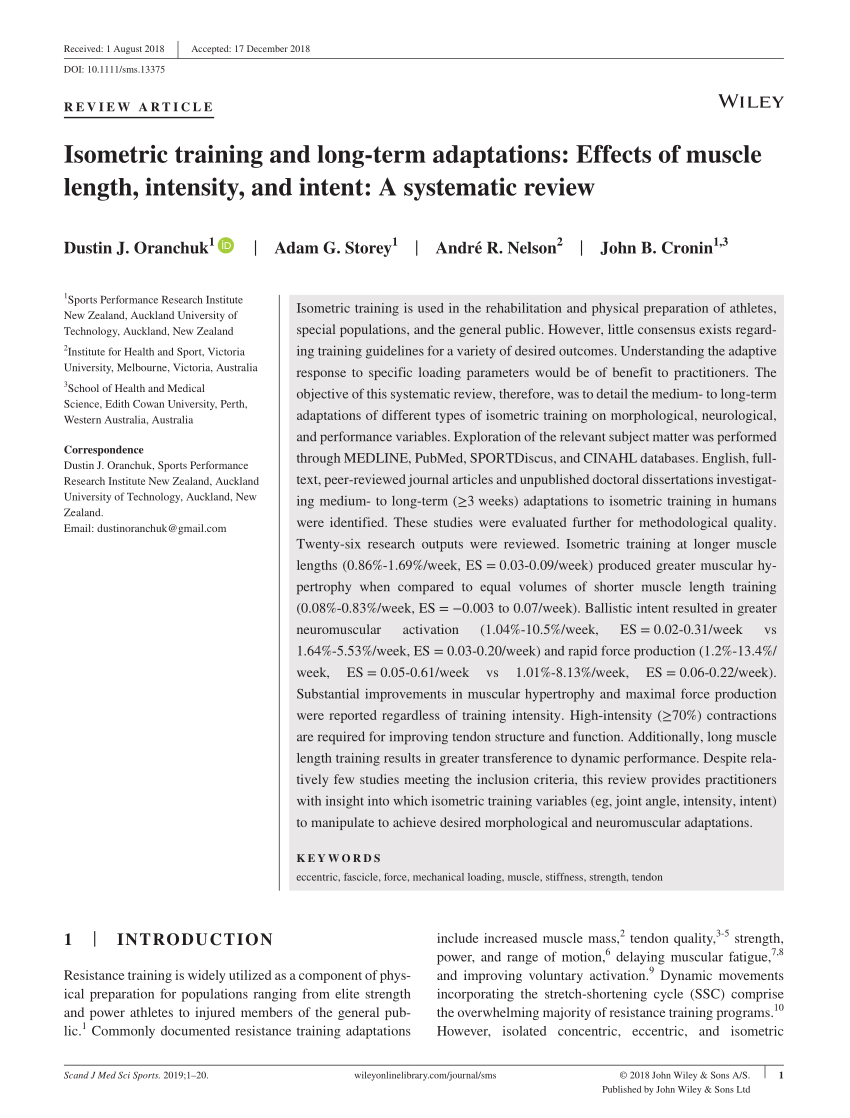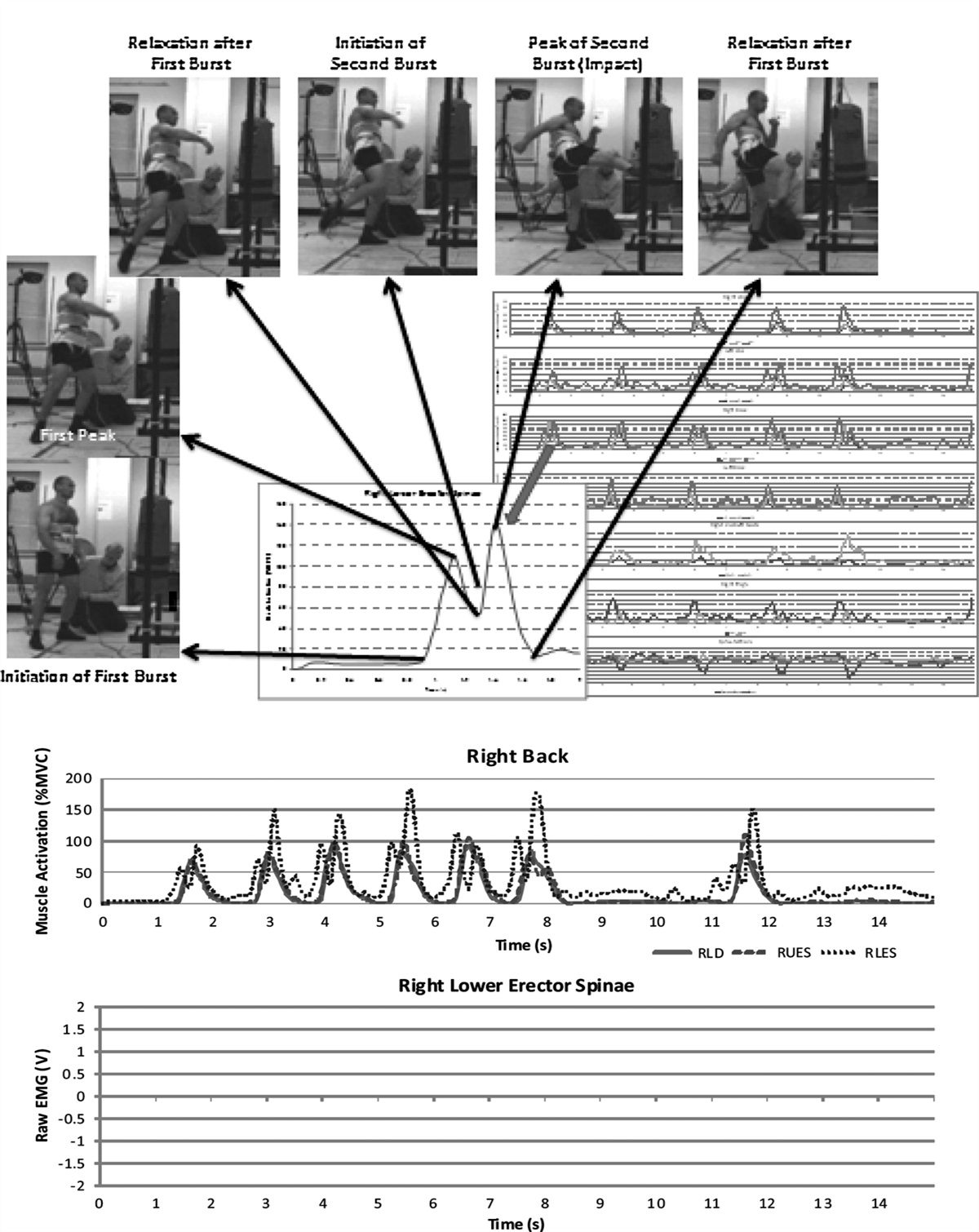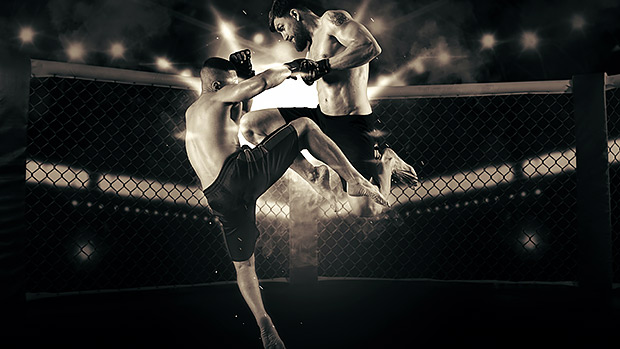Using these as more of a regular workout I break it down into 8 second pulses
"The Contract-Relax-Contract Pulsing Cycle"
Reearch by Dr. Stu McGill has demonstrated Pulse Training in which a Contraction of the Muscles is alternated by a Relation of the Muscle in the movement, ensure greater Force Production; Strength and Power,
Evidence of a Double Peak in Muscle Activation to Enhance Strike Speed and Force: An Example With Elite Mixed Martial Arts Fighters
mize speed and strike force. When muscle contracts, it increases in both force and stiffness. Force creates faster movement, but the corresponding stiffness slows the change of muscle shape and joint velocity. The purpose of this study was to investigate how this speed strength is accomplished...

journals.lww.com
"Many of the strikes intend to create fast motion and finish with a very large striking force, demonstrating a "double peak" of muscle activity. An initial peak was timed with the initiation of motion presumably to enhance stiffness and stability through the body before motion. This appeared to create an inertial mass in the large "core" for limb muscles to "pry" against to initiate limb motion. Then, some muscles underwent a relaxation phase as speed of limb motion increased. A second peak was observed upon contact with the opponent (heavy bag). It was postulated that this would increase stiffness through the body linkage, resulting in a higher effective mass behind the strike and likely a higher strike force.
Observation of the contract-relax-contract pulsing cycle during forceful and quick strikes suggests that it may be fruitful to consider pulse training that involves not only the rate of muscle contraction but also the rate of muscle relaxation."
Matveyev (9) showed that elite athletes could have a muscle relaxation time of up to 8 times faster than nonathletes. The same work suggested that
although relaxation rate is difficult to train, the release of an isometric contraction into full relaxation and speed of movement is the most effective training method.
...We have observed similar “pulsing” of activation in other elite sportsmen, including golfers and sprinters (10).
With that in mind, let's look at one method of employing it in Resistance Training...
Kettlebell Swing Pluse Training
Not many people talk about these methods for getting faster and more powerful. Let's fix that.

www.t-nation.com
How to Train for Rapid Relaxation
The kettlebell swing can be used for developing the skill of pulsing contraction followed by rapid relaxation. Here's how:
- A burst of energy or "pulse" is used to begin the swing.
- Once the swing is around chest height, rapid relaxation must occur to re-hinge the hips and guide the kettlebell back between the legs.
- Another pulsed contraction is used to start the beginning of the next swing.
- Then the kettlebell swings go in a continuous cycle of turning on and turning off certain musculature in the right sequence to create pulsing contractions. That develops the ability to produce power.
Understanding the mechanism/concept behind this "Pulse Training Method" allows individual to write a program and apply it with other Resistance Training Exercises or in training other sports,,,.
Explosive-Isometrics
Here are two Functional isometric Training Methods for Pulse Training...
Traditional Functional Isometric Pulse Training
This method works with Functioanl Isometric Training Pulse Training with a Loaded Bar Weight.
With Funtional Isometric Training Pulse Training the Bar Weight can be progressively increased (increasing the weight with each set).
There will be two sets of Rack Pins.
The bar will sit on pins lower in the Rack.
Another set of Rack Pins will be placed a few inches up in the Rack so that it only allow a Partial Range in the Movement.
With each Repetiton of the Set, drive the Bar as hard and fast as possible from the Lower Pins into the Upper Pins; performing an Isometric Action into the Upper Pins for a few Seconds. This is a Pulse Training Method.
The Issue
The issue with this method with a Light Weight is that ramming the Bar from the Lower Pins into the Upper Pins produces a Whiplash Effect that doen't feel good.
Secondly, ramming it with a lot of Speed into the Upper Pin makes a lot of noise. Most gym most likely won't allow that.
This method that overrides these issues...
Banded Functional Isometerics Pulse Training
With this method the Pin Setting are the same.
Some experiment is required to get this method down.
Attach Bands to the Bar in such a way that you can only perform a Partial Range Movement, with no Lockout.
This Functional Explosive Isometric Training also allows for progressively increasing the loading in each Set.
This Banded Accommodation Resistance Funtional Explosive Isometric Pulse Training Movement...
1) Slows the Bar Speed Down prior to hitting the Functional Isometric Positions. Thus, no Whiplash.
2) There is no "Noise Pollution" with this method, as there is with ramming the Bar into the Top Pin.
Has anyone come up with an expedient or improvised means of measuring force production decay?
Crane Scale
This article goes into how to meaure Isometric Froce Production with a Crane Scale.
It just takes a little experimentation on how to set it up for the Isometric Exercise being performed.

www.researchgate.net


